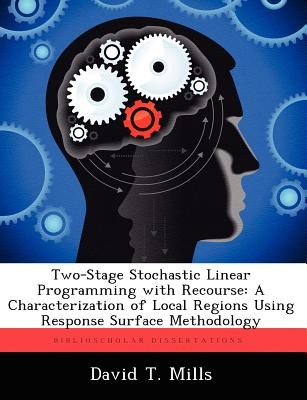
- We will send in 10–14 business days.
- Author: David T Mills
- Publisher: BiblioScholar
- ISBN-10: 1249586763
- ISBN-13: 9781249586760
- Format: 18.9 x 24.6 x 0.5 cm, softcover
- Language: English
- SAVE -10% with code: EXTRA
Two-Stage Stochastic Linear Programming with Recourse (e-book) (used book) | bookbook.eu
Reviews
Description
The LP recourse problem applies to two-stage optimization problems where uncertainty in resource availability of the second stage hinders informed decision making. The recourse function affords a way to compensate "later" for an error in prediction "now." The literature provides a rich body of work on the optimization of such problems, but little research has been accomplished regarding the characterization of the surface in the local region of optimality, in particular sensitivity analysis. A decision maker faced with considerations other than the modeled objective function must be presented with a way to estimate the impact of operating at non-optimal decision variable values. This work develops and demonstrates a technique for characterizing the surface using response surface methodology. Specifically, the flexibility and utility of RSM techniques applied to this class of problems is demonstrated, and a methodology for characterizing the surface in the local region using a low-order polynomial is developed.
EXTRA 10 % discount with code: EXTRA
The promotion ends in 18d.21:48:10
The discount code is valid when purchasing from 10 €. Discounts do not stack.
- Author: David T Mills
- Publisher: BiblioScholar
- ISBN-10: 1249586763
- ISBN-13: 9781249586760
- Format: 18.9 x 24.6 x 0.5 cm, softcover
- Language: English English
The LP recourse problem applies to two-stage optimization problems where uncertainty in resource availability of the second stage hinders informed decision making. The recourse function affords a way to compensate "later" for an error in prediction "now." The literature provides a rich body of work on the optimization of such problems, but little research has been accomplished regarding the characterization of the surface in the local region of optimality, in particular sensitivity analysis. A decision maker faced with considerations other than the modeled objective function must be presented with a way to estimate the impact of operating at non-optimal decision variable values. This work develops and demonstrates a technique for characterizing the surface using response surface methodology. Specifically, the flexibility and utility of RSM techniques applied to this class of problems is demonstrated, and a methodology for characterizing the surface in the local region using a low-order polynomial is developed.


Reviews